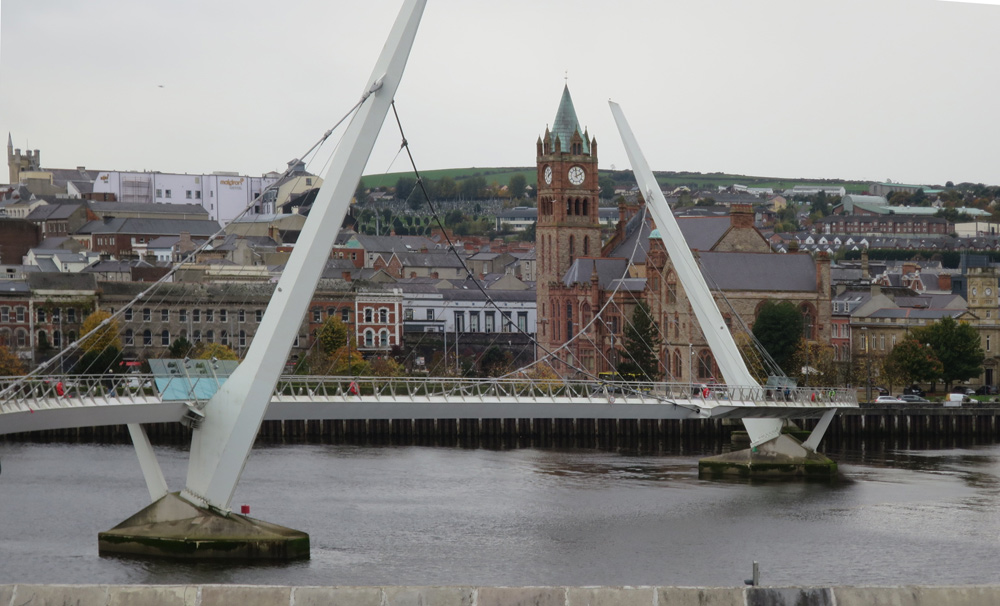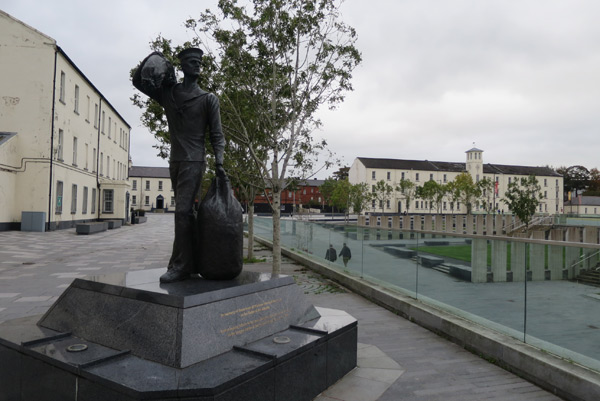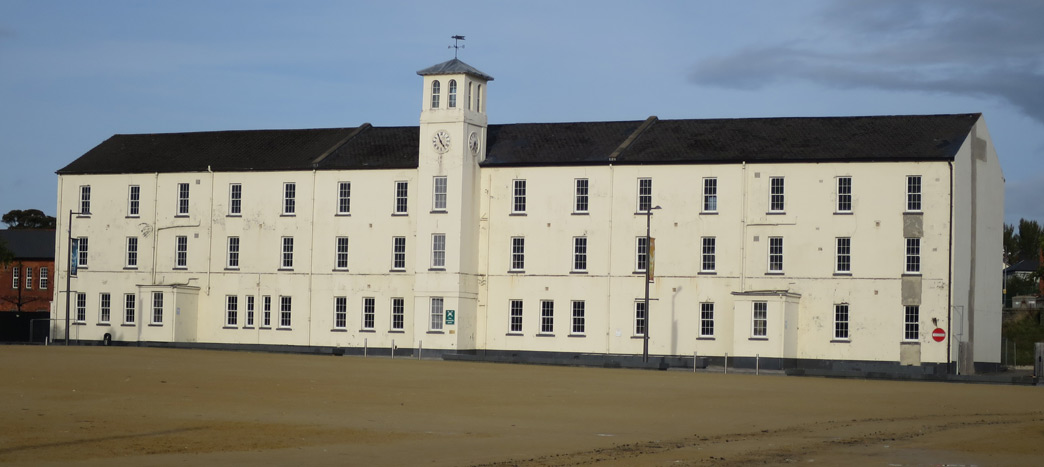






Derry provided much needed rest and relaxation to Allied
sailors following convoy duty. By April 1943 the
shore base at Londonderry, HMS Ferret, was responsible for 149 escort
and anti-submarine patrol vessels, two thousand shore-based personnel
and twenty thousand British and Canadian seamen.
From late 1940 to early 1942 HMS Venomous
was part of the First Escort Group at Londonderry, Northern Ireland,
which with the ships of the Royal Canadian Navy (RCN) escorted the convoys across
the Atlantic during the longest battle of the Second World War.
HMS Venomous remained an
Atlantic escort until April 1942 interrupted by major repairs after
detonating a mine in Liverpool bay on New Year's Eve 1940 and repairs
and refit after a collision with the flotilla leader, HMS Keppel, in November 1941. After a major refit Venomous escorted Arctic Convoy PQ.15 to Murmansk on the Kola Inlet in Northern Russia and returning convoy QP.11 in April and May 1942. Find out more about the convoys escorted by Venomous while based at Londonderry.


Lt Homer McPhee RN (1919-2006) was a popular Canadian officer on HMS Venomous in 1941. He was born at Vancouver in 1919 and worked his passage across the Atlantic to join the Royal Navy as a boy sailor in 1936. He transferred to the Royal Canadian Navy (RCN) after the war, lived for a time in Northern Ireland with his family and retired from the RCN in 1979 as its longest serving officer. He shared a cabin with Sub Lt John Tucker RNR (1920-2011) who described the convoy system in A Hard Fought Ship.
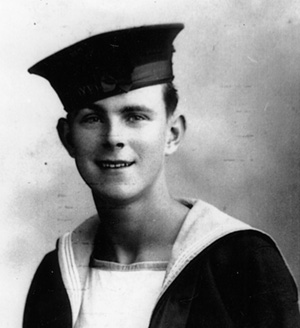
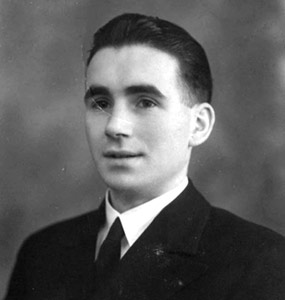 Some crew members came from Northern Ireland and others met their
future wives there. And some like Jack Bolton (near left) did both. Jack did not
fancy being a foot slogging soldier so travelled the twenty
miles from his home at Strabane south of Londonderry to Belfast for a medical and joined the Royal
Navy. After basic training at HMS Arthur
in Skegness (wheree eight men were killed in a bombing raid) and a
three month course as a torpedoman at Devonport he was drafted to HMS Venomous at
Londonderry. Venomous
was at sea escorting Arctic Convoy PQ.15 to Murmansk and Jack stayed in
a boarding house for a month until her return. The girl he was courting
and later married
was working in a shirt factory across the road from the naval base.
Jack joined Venomous in June 1942 as Seaman Torpedoman, AB(ST), Official Number D/JX 342131. He was
95 on the 22 February 2018 and lives
in Telford, Shropshire, but still keeps in touch with family in Northern Ireland.
Some crew members came from Northern Ireland and others met their
future wives there. And some like Jack Bolton (near left) did both. Jack did not
fancy being a foot slogging soldier so travelled the twenty
miles from his home at Strabane south of Londonderry to Belfast for a medical and joined the Royal
Navy. After basic training at HMS Arthur
in Skegness (wheree eight men were killed in a bombing raid) and a
three month course as a torpedoman at Devonport he was drafted to HMS Venomous at
Londonderry. Venomous
was at sea escorting Arctic Convoy PQ.15 to Murmansk and Jack stayed in
a boarding house for a month until her return. The girl he was courting
and later married
was working in a shirt factory across the road from the naval base.
Jack joined Venomous in June 1942 as Seaman Torpedoman, AB(ST), Official Number D/JX 342131. He was
95 on the 22 February 2018 and lives
in Telford, Shropshire, but still keeps in touch with family in Northern Ireland.
Eric Pountney, a wireless Telegrapher on Venomous, learned to drive in Derry and one of his fellow telegraphers, PO James Andrew Tonner (in suit, right), met his wife in Derry. His widow and their children still live there today. Eric's elder brother, Sydney Russell Pountney, was serving in Northen Ireland with the Royal Corps of Signals and also married an Ulster girl, Eileen.
Jack Bolton was in the same mess as "Micky" (Joseph) Addis, a Bosun's Mate, ON SSX17322 (below left), who joined Venomous when she came out of Reserve in 1939. Addis came from Belfast and having been on the ship so long tended to throw his weight around and was regarded as a bit of a bully by the younger ratings. He had his own place in the mess where nobody else was allowed to sit and on one occasion "saved up his daily tot of rum, went on a binge, hit a sailor and was locked up for a few days".
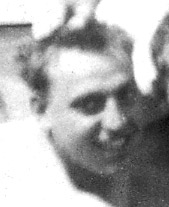
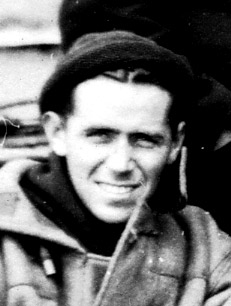 Arthur Battersby
(AX/19952) on right was born in Coleraine, fifty miles east of Londonderry, and
was in the Merchant Marine (as a cabin boy) before joining the Royal
Navy Reserve in March 1938. He was in the armed Merchant Cruiser, HMS Hector, on the Eastern Station for two years. After she was bombed and sunk by Japanese aircraft at Colombo he was posted to Venomous in August 1942 in time to take part in Operation Pedestal, the relief of Malta.
By then he was a 23 year old Leading Seaman, older and more experienced
than the Hostilities Only (HO) ratings on the lower deck. He was on "B" Gun Crew with Cyril Hely and appeared in some of his photographs (right) and remained with Venomous until she de-commissioned at Falmouth in October 1943. He was made a Petty Officer and spent two years at HMS Ferrett, the shore base at Londonderry as a gunnery instructor. He returned to the Pacific with the repair depot ship, HMS Artifex. One of his shipmates on the Artifex was PO Kenneth Collings, a Sick Berth Attendant on HMS Hecla rescued by Venomous when Hecla was torpedoed off the coast of North Africa on 11 November 1942.
Arthur Battersby
(AX/19952) on right was born in Coleraine, fifty miles east of Londonderry, and
was in the Merchant Marine (as a cabin boy) before joining the Royal
Navy Reserve in March 1938. He was in the armed Merchant Cruiser, HMS Hector, on the Eastern Station for two years. After she was bombed and sunk by Japanese aircraft at Colombo he was posted to Venomous in August 1942 in time to take part in Operation Pedestal, the relief of Malta.
By then he was a 23 year old Leading Seaman, older and more experienced
than the Hostilities Only (HO) ratings on the lower deck. He was on "B" Gun Crew with Cyril Hely and appeared in some of his photographs (right) and remained with Venomous until she de-commissioned at Falmouth in October 1943. He was made a Petty Officer and spent two years at HMS Ferrett, the shore base at Londonderry as a gunnery instructor. He returned to the Pacific with the repair depot ship, HMS Artifex. One of his shipmates on the Artifex was PO Kenneth Collings, a Sick Berth Attendant on HMS Hecla rescued by Venomous when Hecla was torpedoed off the coast of North Africa on 11 November 1942.
William J. ("Dolly") Gray was described by shipmate Harry Haddon as a
"likeable Irishman with strong political opinions" from Belfast. He is seen below with Cyril Hely (who
is playing the ukulele) and is third from right in the photograph of the crew
of B Gun "fooling about" taken in the Mediterranean in 1943. Dolly Gray was killed when his next ship HMS Albatross
was torpedoed on 11 August 1944. It would be nice to hear from the family of this likeable Irishman.
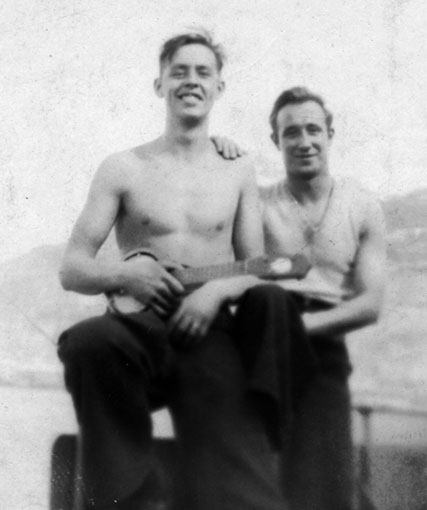 |
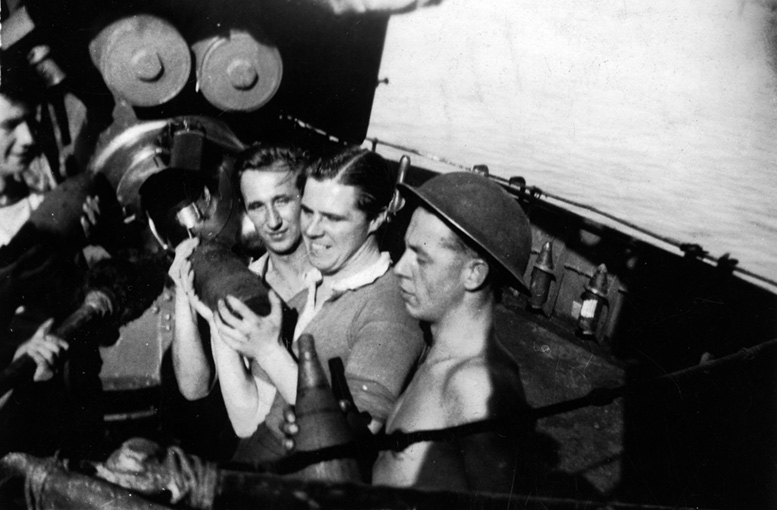 |

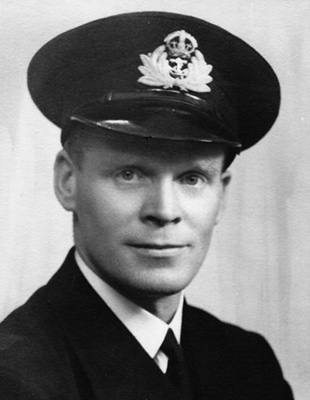 |
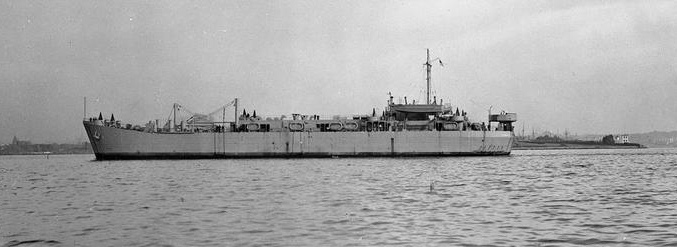 John Carson was one of six CW Candidates who joined HMS Venomous In September 1942 |
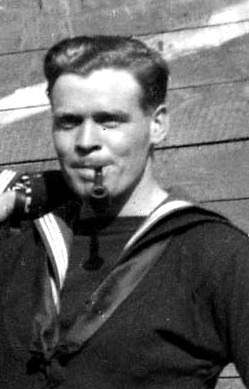 |
John Carson came from a farming family in County Down but worked at banks in Dublin
and Belfast before enlisting in the RNVR on the 27 May 1942. He was
thirty when he joined Venomous
as one of the CW Candidates in time to escort Arctic Convoy PQ.18 to
Archangel. PQ.17 had been a disaster and
nerves must have been on edge as they set off for Iceland where the
convoy assembled but once again their elderly worn out boilers let them
down, "condensoritis", and they had to go to Belfast for repair
(200 boiler tubes had to be replaced) making it impossible for them to
escort PQ.18. His fiancee lived in Belfast and he invited his fellow CW
Candidate, Alex Campbell from Edinburgh to visit her house where they
had a much needed hot bath. There is a recording of Alex Campbell being interviwed by the IWM in 2009 which can be heard online.
The six CW Candidates were aboard Venomous when HMS Hecla was torpedoed off North Africa on the 11 November and left Venomous at Gibraltar in February 1943 to return to England for officer training. John Carson was commissioned and as Sub Lt J. Carson RNVR his first posting was to LSE 1 (above) commanded by Lt Geoffrey N. Spring RNR who had been rescued by Venomous in November 1942 when his previous ship, HMS Hecla,
was torpedoed. Lt
Spring credited John Carson with his rescue and asked for him as one of
his officers. LSE 1 had seen action off the D-Day beaches as an LST
(Landing Ship Tank) but had been converted into a landing craft repair
ship, an LSE. In September 1944 John Carson was promoted to lieutenant
but remained on LSE 1 until 28 February 1946 when he transferred to HMS
Sefton at Singapore for two months before returning to Britain and being discharged from the RNVR in August.
John Carson saw his year old daughter for the first time when he returned to Northern Ireland in the late summer of 1946 and resumed his career in banking. He retained his link to the Navy during the Cold War. The Royal Naval Mine Watching Service, a civilian organisation, was formed in 1952 as part of the auxiliary forces of the British Naval Service. Its intended role, should war break out again, was to man observation points overlooking ports and strategic waterways in order to report mines dropped by aircraft. In January 1952, John Carson became the Mine Watching Service Officer for Belfast.
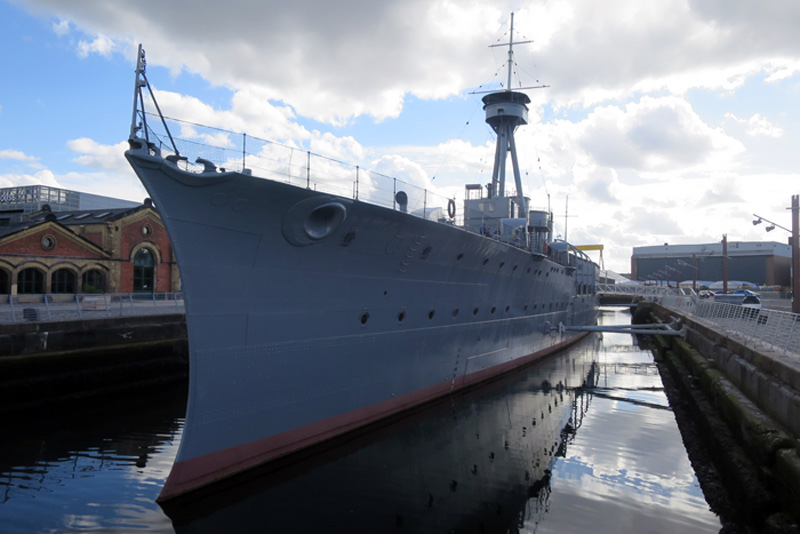 |
 |
The C-Class Cruiser, HMS Caroline, the only surviving warship which took part in the Battle of Jutland, is the HQ of the RNVR in Belfast and a museum ship open to the public
HMS Caroline is part of the Royal Navy Museum
Photographed by Bill Forster in September 2018
This branch of the RNMWS was based on HMS Caroline, a cruiser which took part in the Battle of Jutland during World War I, and is the last floating training ship of the RNVR. The ship was restored for the 2016 centenary commemorations of the Battle of Jutland and is open to the public. In 1962 the RNMWS was transformed into the Royal Naval Auxiliary Service, intended as a short-notice response force to help disperse shipping in British ports in case of a nuclear strike. John Carson's retirement from the Bank was all too short, as he succumbed to bowel cancer just before his sixty-ninth birthday in 1981. He is survived by a son and a daughter.
 Ian
Maxwell was born at Kircubbin in Northern Ireland on 21 June 1919 and
educated at Queens University, Belfast. He replaced Sg Lt Milner RNVR at
Londonderry on the 25 August 1942 and remained aboard as the "Doc"until October 1943.
Ian
Maxwell was born at Kircubbin in Northern Ireland on 21 June 1919 and
educated at Queens University, Belfast. He replaced Sg Lt Milner RNVR at
Londonderry on the 25 August 1942 and remained aboard as the "Doc"until October 1943.He left Venomous when she limped back home to Falmouth in October 1943 for conversion to an Air Target Ship and joined SS Serapis, a new S (Savage) Class destroyer laid down in January 1941 at Scotts of Greenock on the Clyde and, finally, about to start her sea trials. She was commisioned on the 23 December and worked up with the Home Fleet at Scapa Flow in January before escorting three Arctic Convoys to the Kola Inlet in Northern Russia.
In May Serapis transferred with ships of 23rd Destroyer Flotilla for support of the landings in Normandy, Operation Neptune,
escorting Convoy S2 to the Eastern Task Force area where she provided
gunfire support, patrol and defence of the assault area. In
September and October she operated off the coast of Norway and in
November she was part of the escort for Convoy JW61A returning Russian
POWs "liberated" in Normandy to Murmansk where they facedan uncertain
future. Further operations off the coast of Norway were followed by two further convoys to the Kola inlet in Northern Russia.
Dr William Maxwell, Senior Lecturer in Human Anatomy at the University of Glasgow until his retirement, mailed me the following details of his father's subsequent life:
"I believe that my father met my mother at HMS Raleigh
when they were both stationed there 1945/46. They married at Cloghy in
N. Ireland in June 1947. My father joined a General Practice with
Jocyelin, Heron and Hayes as Junior Partner some time in late 1947,
at 237 Gloucester Road, Bishopton, Bristol. Dad worked there
until his death in 1973. He became deputy Police Surgeon in 1959 and
Chief Police Surgeon in 1965."
HMS Venomous at Halifax, Nova Scotia
Venomous
was a Short Range Escort (SRE) which left the "empties" at Iceland and met the
next incoming convoy. But Fred Thomas, the RDF
operator, and Lt John Tucker RNR recalled that on several occasions they made a quick dash
into Havelfjord to refuel before rejoining the convoy and continuing
westward to the ports on the Atlantic seaboard of Canada: Saint John in New Brunswick, St Johns in Newfoundland and Halifax in Nova Scotia.
The "No 1" on HMS Venomous in 1941 was Lt Angus Mackenzie RNR, a strong willed decisive character known affectionately as "Bloodie Mackenzie". In 1971 Mackenzie visited his daughter Sheena at Halifax, Nova Scotia, and looking down on Bedford Basin from the newly built bridge across the narrows recalled how different it was when Venomous was there in 1941. The Basin was so packed with ships that he could go ashore by walking from ship to ship. Some years after his death at Majorca in 1975 Sheena Mackenzie arranged for her father's ashes to be scattered in Bedford Basin, where the convoys assembled for the Atlantic crossing.
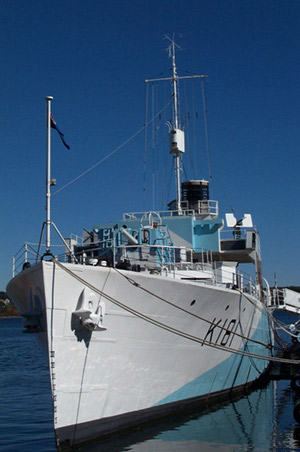 |
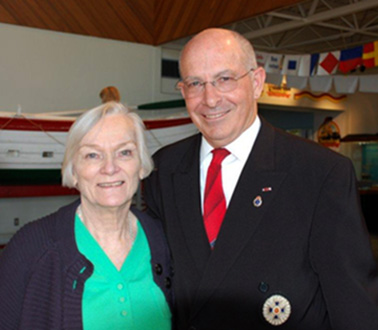 |
 |
The Canadian launch of the previous edition of A Hard Fought Ship took place at the Maritime Museum of the Atlantic in Halifax on the 18 June 2011. Moored alongside the
Museum on the waterfront at Halifax is HMCS Sackville the last survivor of the 120 Canadian built corvettes which escorted the convoys to
Londonderry.
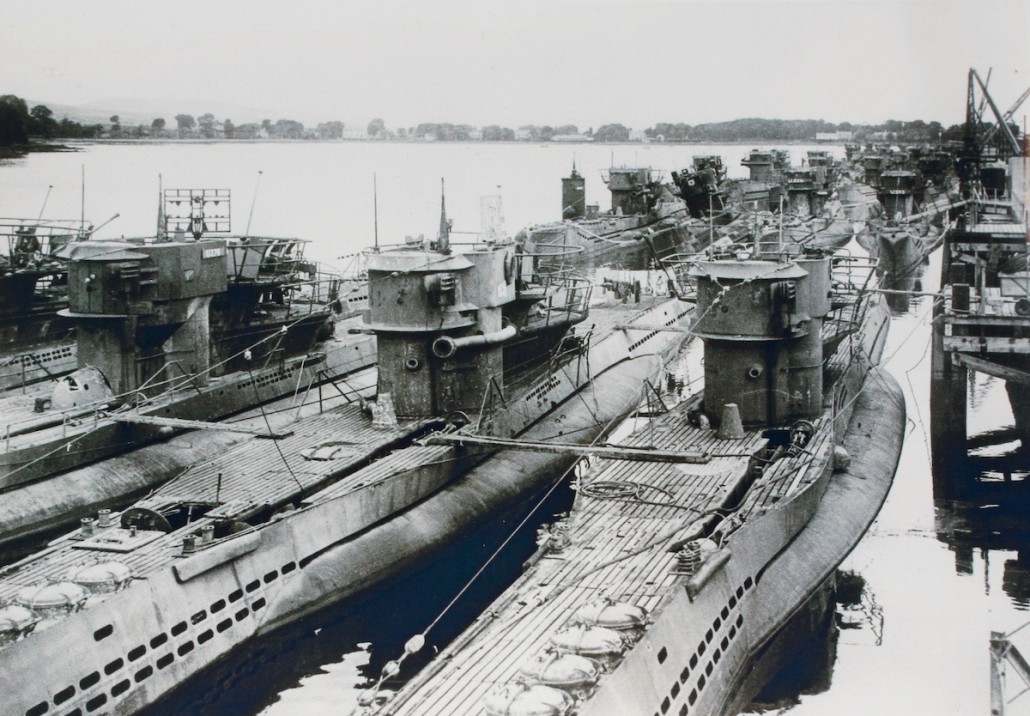
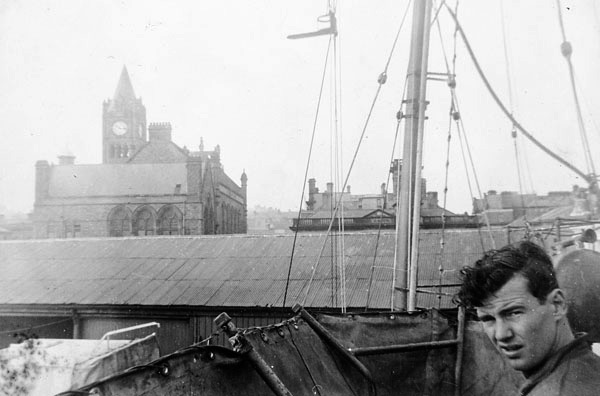 View of the Guildhall from the deck of HMCS Kamsack
Courtesy of Library and Archives Canada |
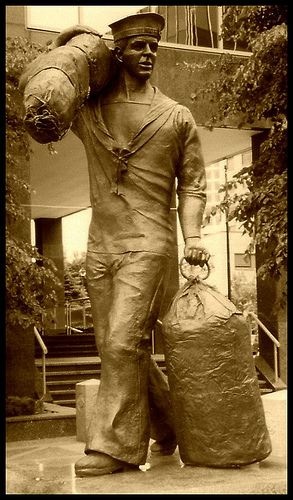 |
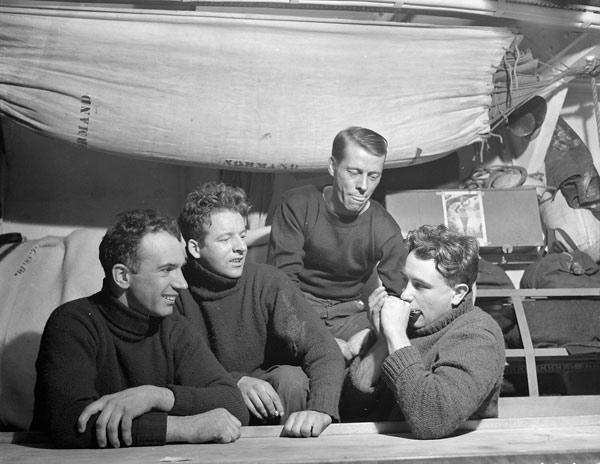 Ratings on HMCS Royal Mount
Courtesy of Library and Archives Canada |
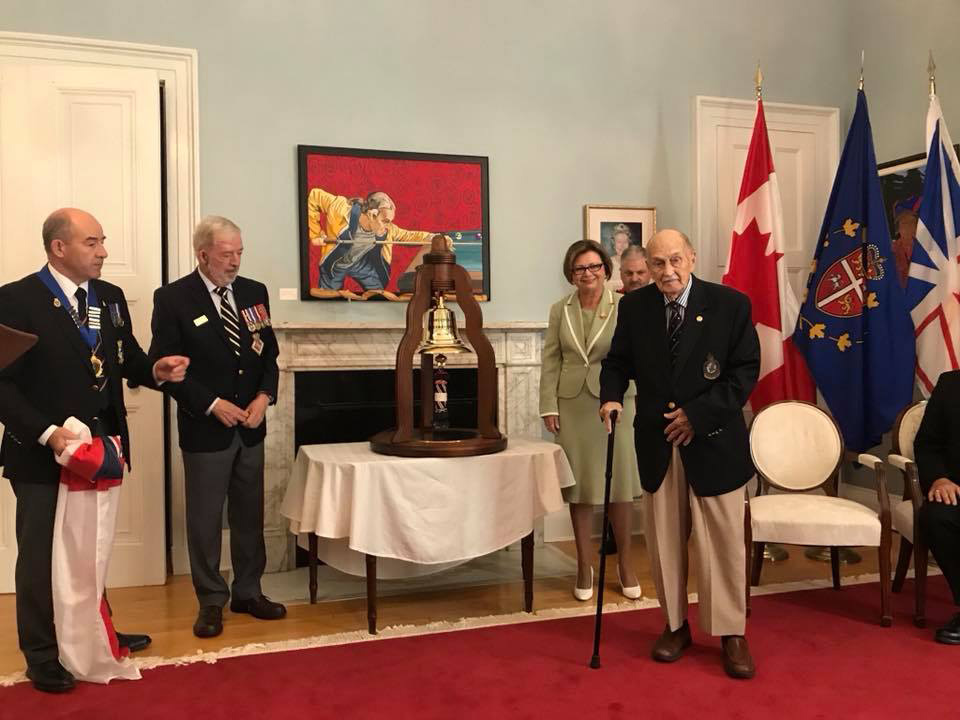 |
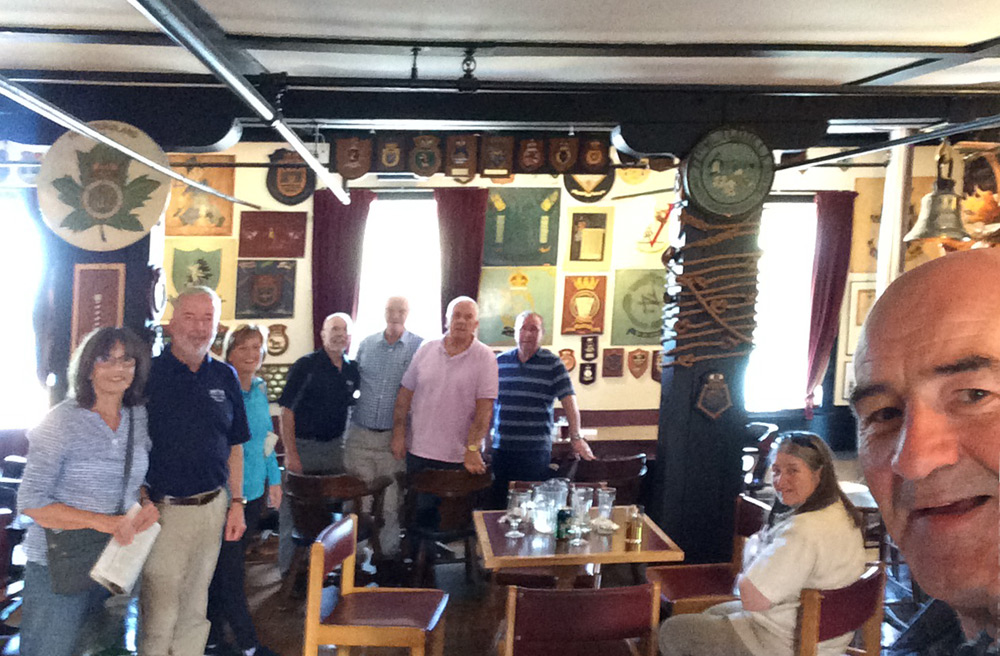 |
